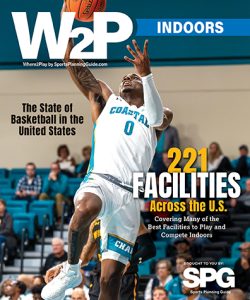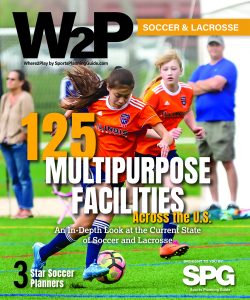Three months of set up, four months of play and over 60,000 competitors. Sound like a headache?
The United States Bowling Congress pulls it off every year.
. The four-month tournament features USBC members from a variety of skill levels, all competing for a few days at a time in one pool for the national championship.
“It’s kind of unique because opposed to say a Super Bowl, which comes in and there is a huge influx of people that sort of bog down the town, we come in, 2,000 people a day, day after day after day after day over an extended period of time,” said Greg Moore, director of tournament planning and production for the USBC.
What results is an event that doesn’t cause the host city to miss a beat, yet gives the local economy a huge shot in the arm.
“It’s just a revolving door, so we don’t put a lot of stress on the infrastructure of the community,” Moore said. “But it sneaks up on them that by the time we leave we’ve contributed about $100 million or more into their economy. All the places we’ve hosted the event seem to want us back.”
But the Open Championships don’t just happen. The planning and execution process is a lengthy one, and one that begins with selecting a host city. First and foremost the USBC wants to make sure that the locale appeals to the tournament’s competitors.
“How bad do they want us?” said Duane Hagen, the Open Championships’ tournament manager. “If the community really acts like they want us, they’re gonna do a lot of things to show the bowlers that they are important and make them rock stars in the city, so to speak. That’s really important to the bowlers.”
Most of the remaining considerations deal with facilities. While this year’s event will take place in Reno’s National Bowling Stadium, most Open Championships actually happen in convention centers. The USBC looks for huge, wide-open “bandboxes” where they will have the flexibility to lay down their own bowling lanes. As a result, many Open Championships take place where no one has ever bowled before.
“We go in and we construct an entirely new bowling facility complete with pro shops, merchandise stores, vendors, administrative space and, of course, the lanes,” Moore said.
The construction process generally takes two to three months, depending on the existing facility. Not every convention center, such as one with columns throughout, is well suited to host the event. The USBC also takes into consideration how well a facility will lend itself to tournament administrators, and whether or not the proposed setup will give maximum exposure to vendors.
Once things get rolling, a bevy of sister events in the area gives bowlers additional chances to compete while in town. In their remaining free time, local businesses reap the rewards.
“We work very hard with the local community to try to highlight all the opportunities that exist within that community for the bowlers to take advantage of when they’re not bowling,” Hagen said. “And if we do a good job, typically the bowlers might stay upwards of three days and four nights and really spend significant time enjoying the community’s food and fun and contributing to the businesses there.”
While going up against a field the size of Cheyenne, Wyoming doesn’t present the best odds, the USBC makes sure to reward the top talent in the country.
“Out of the say 60,000 bowlers that we have come to an average tournament, we pay one in four,” Moore said. “So you can finish 14,890th and still get a check. Not a very big one, but you’d get a check.”







